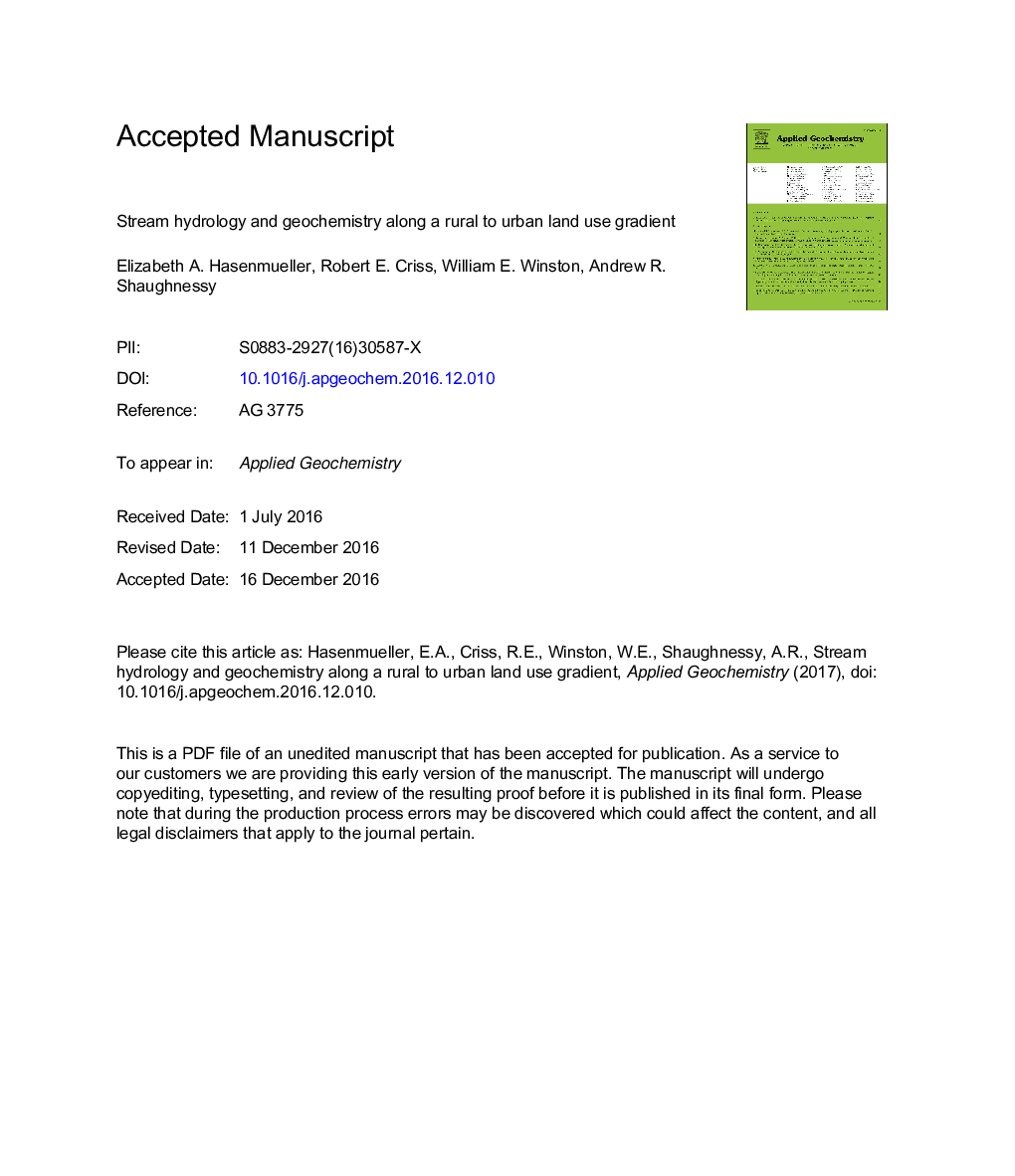| Article ID | Journal | Published Year | Pages | File Type |
|---|---|---|---|---|
| 5752556 | Applied Geochemistry | 2017 | 50 Pages |
Abstract
High frequency monitoring of water quality and stable isotopes quantify large hydrological and geochemical differences across a rural to urban land use gradient that includes three watersheds and two of their subbasins. Following precipitation events, floods on a rural stream feature hydrographs with low peak discharges and long lag times, high baseflow contributions, and small geochemical variations. In contrast, the flows of an urban stream and its tributary respond in a flashy manner, with average lag times decreasing by at least 55% compared to the rural stream. We also observed that baseflow contributions during floods decreased by an average of 40% in the urban streams. Importantly, we find that reduced baseflow as a function of increasing impervious surface area is not a linear trend among the streams, and suburban streams are less impacted than would be predicted by impervious surface area alone. The urban streams also exhibit large variations in water quality parameters during flooding events, often with five times the variability of the rural end-member. These differences are observed among all physical and geochemical characteristics that were monitored, including flow magnitude, stable isotope ratios, temperature, dissolved oxygen (DO), pH, turbidity, specific conductivity, concentrations of Clâ and nutrients, and bacterial loads. The great variability of urban streams following storms is paralleled by their larger diurnal and seasonal oscillations. Collectively, the extreme variations in the physical and geochemical character of urban streams have negative consequences to environmental quality and aquatic life.
Related Topics
Physical Sciences and Engineering
Earth and Planetary Sciences
Geochemistry and Petrology
Authors
Elizabeth A. Hasenmueller, Robert E. Criss, William E. Winston, Andrew R. Shaughnessy,
